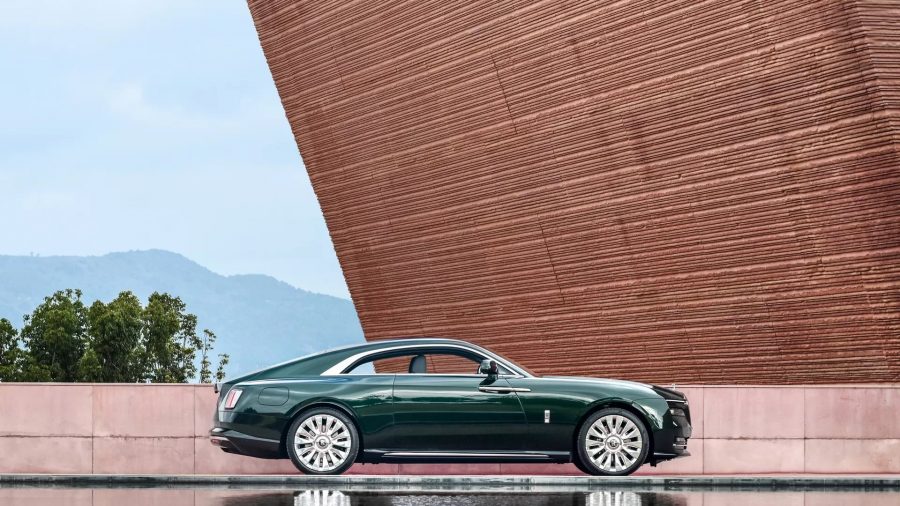Tariffs have long been a tool of economic policy, used to regulate trade, protect domestic industries, and at times, retaliate in geopolitical disputes. However, their impact on the luxury industry—a sector that thrives on cross-border commerce, global brand prestige, and exclusivity—can be particularly pronounced.
From high fashion to luxury automobiles, fine wines to five-star hospitality, the imposition of tariffs reshapes business strategies, pricing, and consumer behavior. In this analysis, we explore how major European and American luxury brands navigate these challenges and the nuanced effects on different categories of luxury consumers.
Luxury Brands Caught in the Crossfire
Fashion and Accessories
Major luxury fashion houses like LVMH (Louis Vuitton, Dior, Givenchy), Kering (Gucci, Saint Laurent, Balenciaga), and Richemont (Cartier, Van Cleef & Arpels) face challenges when tariffs are imposed on imports into key markets like the United States and China. Higher import duties increase costs, which are often passed on to consumers, making already expensive goods even pricier. While Ultra-High-Net-Worth Individuals (UHNWI) may not be deterred, aspirational buyers—who save for entry-level luxury goods like handbags and sneakers—could be priced out, slowing brand expansion in emerging markets.
Luxury Automobiles
Luxury car manufacturers such as Rolls-Royce, Ferrari, Bentley, and Porsche are particularly vulnerable to tariffs, especially given the industry’s reliance on global supply chains. Tariffs imposed by the U.S. on European auto imports, or vice versa, can lead to significant price hikes. When China increased tariffs on U.S. cars in response to trade tensions, brands like Tesla, Cadillac, and Lincoln faced higher costs and declining competitiveness. Meanwhile, European automakers like Mercedes-Benz and BMW, which produce vehicles in the U.S. for export, found themselves in a difficult position.
Fine Wines and Spirits
The high-end beverage industry, including brands such as Moët & Chandon, Dom Pérignon, Hennessy, and Château Margaux, has seen substantial disruptions due to tariffs. The U.S.-E.U. trade dispute over aerospace subsidies resulted in tariffs on European wines and spirits, making products like French Champagne and Scotch whisky significantly more expensive for American consumers. This led to stockpiling by distributors before tariffs were implemented and a subsequent dip in sales as prices climbed.
Luxury Hospitality and Travel
High-end hotels, private aviation, and elite tourism also suffer from trade tensions. When tariffs affect economic stability, discretionary spending on luxury travel declines. For instance, during the U.S.-China trade war, Chinese luxury travelers—who are major spenders at luxury hotels, restaurants, and boutiques in the West—reduced their overseas trips, impacting revenue for brands reliant on affluent tourists.

photo : @Rolls-Royce
Consumer Impact: Aspirational vs. UHNWI Buyers
Aspirational Consumers
Aspirational buyers, typically middle-to-upper-class consumers seeking entry into the luxury world, are the most sensitive to price increases. Tariffs that push handbag prices beyond psychological price thresholds (e.g., a $1,500 Louis Vuitton bag rising to $1,800) could deter these shoppers, forcing brands to reconsider pricing strategies or offer more localized production to circumvent import duties.
High-Net-Worth and Ultra-High-Net-Worth Individuals (UHNWI)
For the wealthiest consumers, tariffs are less of a deterrent. These buyers prioritize exclusivity, quality, and brand heritage over price sensitivity. However, they may shift their buying behaviors—opting to purchase directly in low-tariff jurisdictions such as Europe or leveraging personal shoppers who navigate global price discrepancies.
Luxury brands are adapting to tariff fluctuations through several key strategies:
1.Local Production: Brands like Chanel and Hermès are expanding production facilities in key markets to avoid tariffs and maintain competitive pricing.
2.Duty-Free Shopping and Travel Retail: High-end brands are capitalizing on duty-free zones and airports to attract global luxury buyers at more competitive prices.
3.Digital and E-Commerce Expansion: Many brands have strengthened their online presence to offer exclusive regional pricing and localized inventory to counter tariff-induced price hikes.
Diversification of Manufacturing and Supply Chains: By relocating production or sourcing from multiple countries, brands can sidestep hefty tariffs and ensure supply chain resilience.
While tariffs present obstacles, the luxury industry has proven its ability to adapt through strategic pricing, market segmentation, and global supply chain agility. Aspirational consumers may delay purchases or turn to resale markets, while UHNWIs continue to drive demand in alternative ways. Ultimately, while tariffs disrupt the luxury sector, the allure of exclusivity, heritage, and prestige ensures that leading brands continue to thrive in a shifting economic landscape.
Are there any emerging markets that luxury brands are targeting to avoid tariffs?
Yes, luxury brands are targeting several emerging markets to avoid tariffs and expand their global reach. Three key emerging markets that luxury brands are focusing on are:
Brazil: Recent tax reforms have made doing business in Brazil easier for luxury brands. The country is attracting attention due to its potential for growth and improved business environment.
Middle East: The region, particularly the United Arab Emirates, Qatar, and Saudi Arabia, is becoming increasingly attractive to luxury brands. The Middle East offers low tariffs and an efficiently functioning business environment, making it an appealing alternative to markets affected by high tariffs. Countries like Dubai, Abu Dhabi, Qatar, Kuwait, and Bahrain are being explored by luxury brands.
South Korea: Luxury spending in South Korea has overtaken China and the US, making it a significant market for brands like Prada, Bottega Veneta, Moncler, and Burberry.
Additionally, other emerging markets that luxury brands are targeting include:
- Central Asian states like Kazakhstan and Uzbekistan, where brands such as Messika, Cartier, Panerai, and Patek Philippe are expanding.
- Southeast Asian countries like Vietnam, Thailand, and Cambodia, which are showing growing appetites for luxury goods.
These emerging markets offer opportunities for luxury brands to diversify their consumer base and potentially mitigate the impact of tariffs in traditional markets. However, it’s important to note that each market presents unique challenges and opportunities, requiring tailored strategies for success.
Which luxury brands are most vulnerable to tariff increases?
Luxury brands most vulnerable to tariff increases are primarily European houses that rely heavily on the U.S. market and cater to aspirational consumers, as opposed to ultra-high-net-worth individuals (UHNWIs). These brands include:
1. Gucci (Kering Group)
Gucci, along with other Kering-owned brands like Balenciaga and Yves Saint Laurent, is particularly exposed due to its reliance on aspirational buyers in the U.S. market. Analysts warn that a 10% to 20% tariff could depress sales, as these customers are more price-sensitive compared to UHNWIs.
2. Burberry
Burberry faces similar challenges as it targets affluent but not ultra-rich clientele. Price increases due to tariffs could alienate aspirational buyers who are already stretching their budgets for luxury purchases.
3. Hermès
Hermès, known for its ultra-exclusive products like Birkin bags, may be less vulnerable overall due to its appeal to UHNWIs who are less affected by price hikes. However, it still risks alienating aspirational consumers who invest in entry-level luxury items like scarves or perfumes.
4. Louis Vuitton (LVMH Group)
Louis Vuitton and other LVMH brands such as Dior and Fendi are heavily reliant on the buoyant U.S. market as Chinese demand lags. While these brands can leverage their pricing power, analysts caution that excessive price hikes could disrupt efforts to harmonize global pricing and alienate aspirational buyers.
5. European Spirits Brands
Luxury spirits producers like Dom Pérignon (LVMH) and other champagne houses are also vulnerable due to their reliance on exports to the U.S., where tariffs would increase costs significantly.

photo: @Van Cleef & Arpels
Impact on Consumer Categories
Aspirational Consumers: These buyers are most affected by tariff-driven price hikes, as they often stretch their budgets for luxury purchases. Brands targeting this group risk losing them to second-hand markets or more affordable alternatives.
UHNWIs: Ultra-high-net-worth individuals remain relatively unaffected by tariffs, as their purchasing power allows them to absorb increased costs without altering consumption habits.
While it’s still early to definitively say which luxury brands have successfully offset tariff increases, some European luxury houses have demonstrated strategies to mitigate the impact:
LVMH: The company has hinted at increasing production in the United States, which could help offset tariff costs. LVMH already operates three factories in the U.S., opened in 1990, 2011, and 2019, as well as jewelry workshops acquired through Tiffany & Co.
Hermès: The brand has shown confidence in its ability to leverage pricing power. Executive Chairman Axel Dumas stated, “If duties increase, we’ll increase our prices accordingly”. Hermès is also expanding into second-tier U.S. cities like Phoenix and Nashville, demonstrating its commitment to the American market despite potential tariffs.
Kering (Gucci, Balenciaga, Yves Saint Laurent): CEO François-Henri Pinault expressed confidence in the company’s ability to adjust pricing strategies in response to tariffs.
However, it’s important to note that these strategies have not yet been fully tested, as the tariffs are still a potential threat. Analysts warn that luxury brands may have limited room for further price increases, given the significant hikes in recent years. The effectiveness of these strategies in truly offsetting tariff increases remains to be seen, especially considering the potential impact on aspirational consumers who are more price-sensitive.

